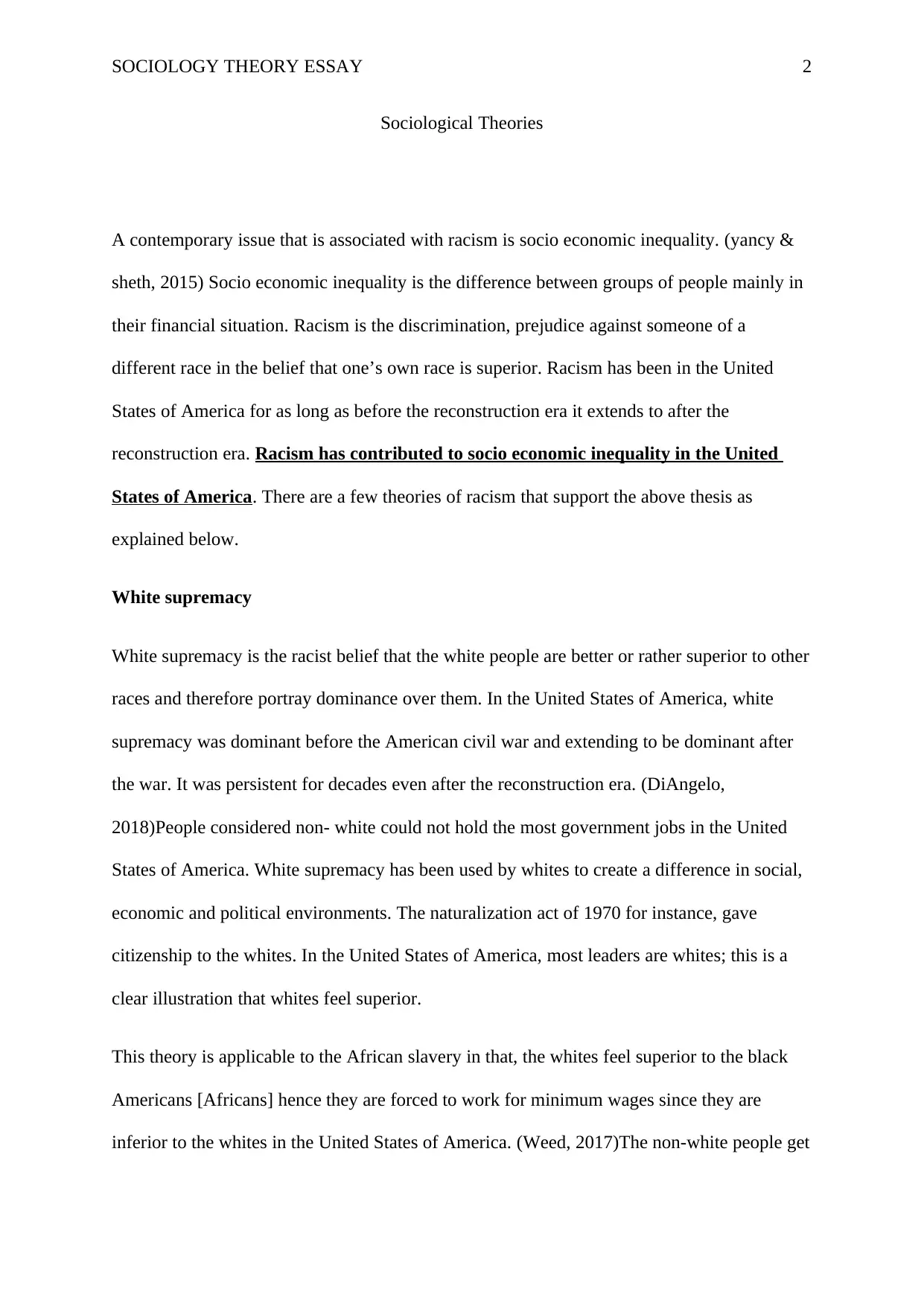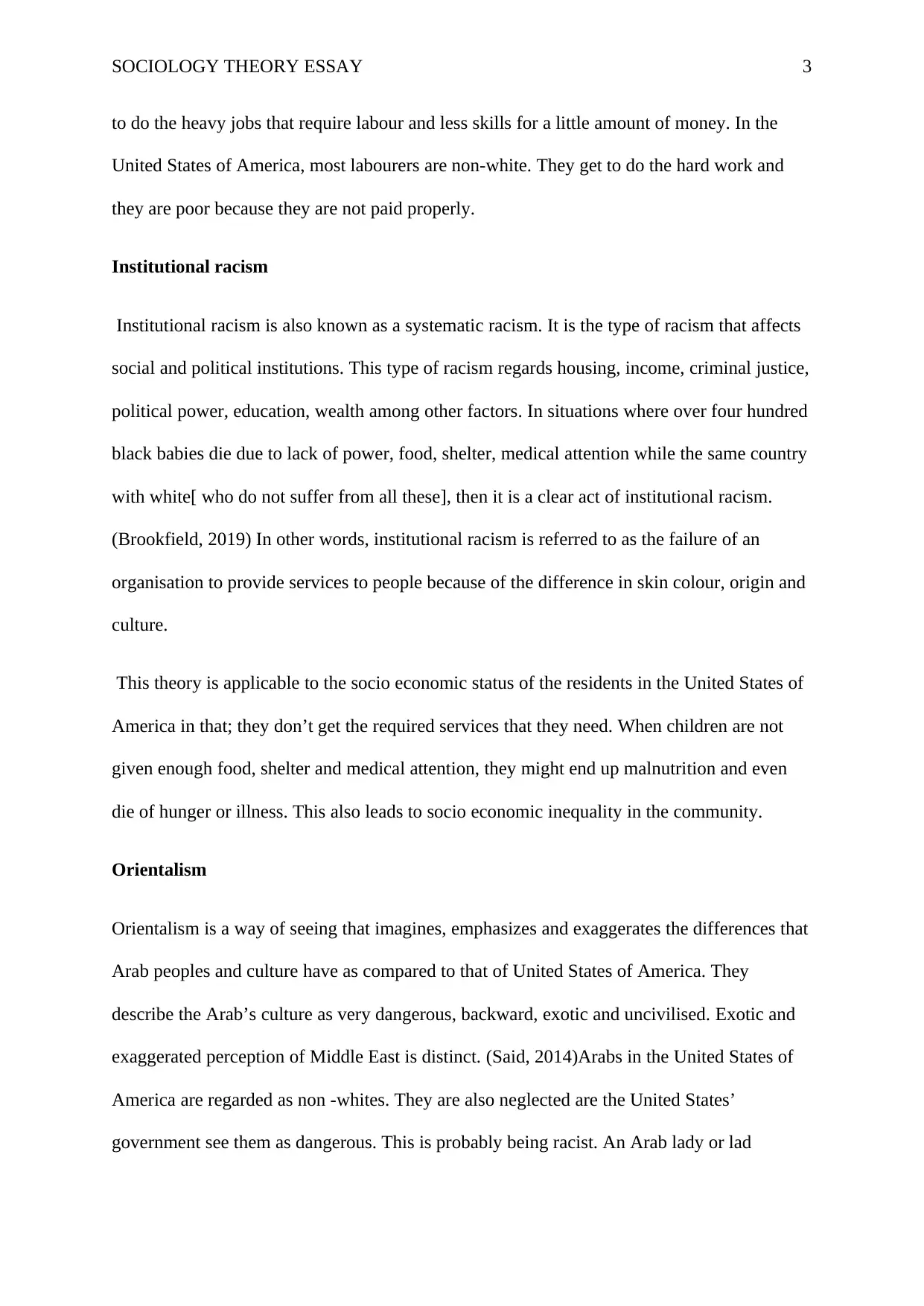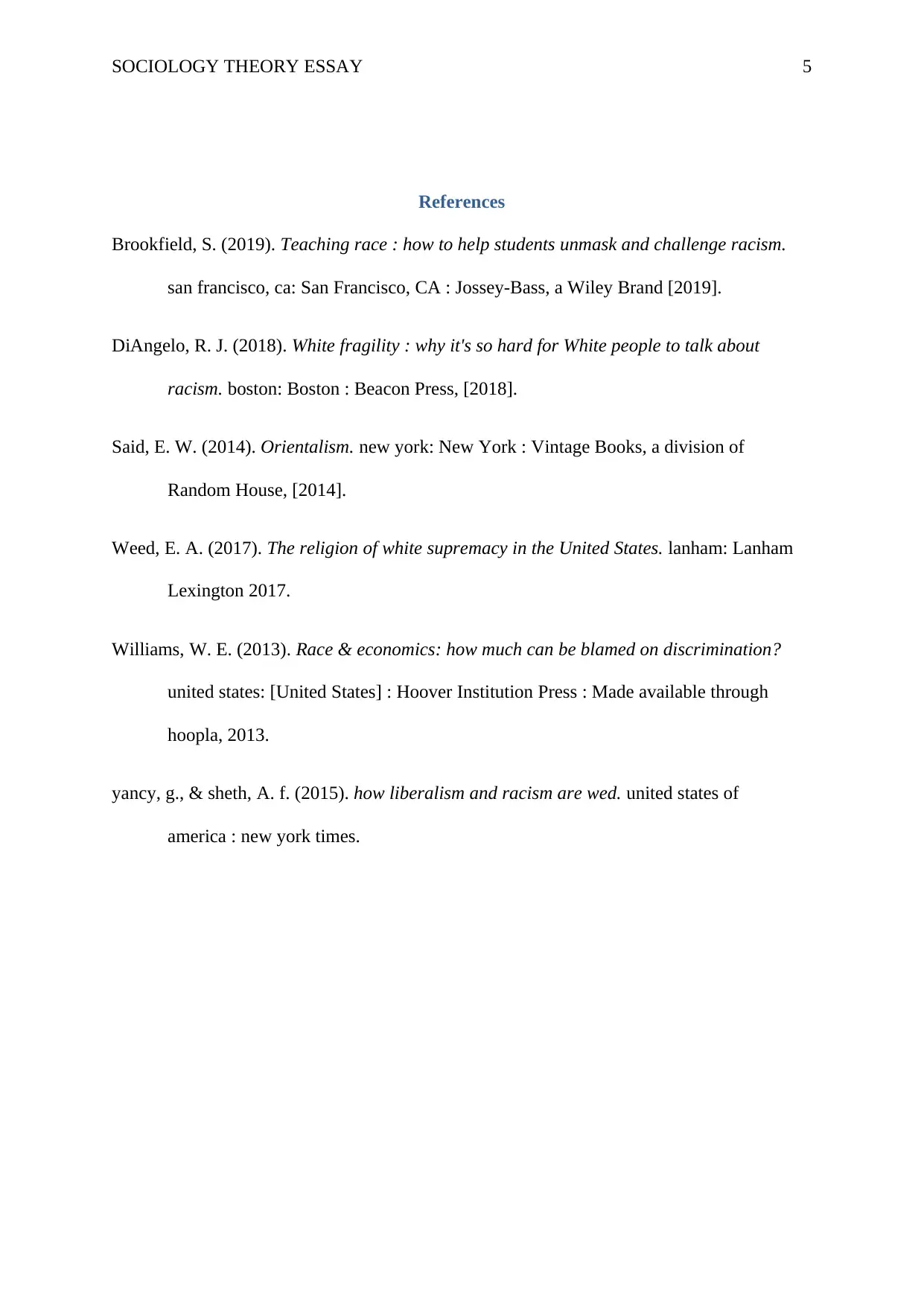Sociological Theories on Racism's Impact on Socioeconomic Status
VerifiedAdded on 2022/10/06
|5
|1031
|14
Essay
AI Summary
This essay examines the connection between racism and socioeconomic inequality through the lens of sociological theories. It discusses white supremacy, highlighting its historical dominance and impact on social, economic, and political environments, particularly concerning the treatment of non-white individuals and their access to opportunities and fair wages. The essay also explores institutional racism, defining it as systemic failures within organizations to provide equitable services based on race, origin, or culture, leading to disparities in areas like housing, healthcare, and education. Furthermore, the concept of Orientalism is analyzed, focusing on how it perpetuates exaggerated and negative stereotypes about Arab cultures, resulting in discriminatory treatment. The essay concludes that these theories collectively demonstrate how racism contributes to socioeconomic inequality, with non-white individuals facing financial instability and limited access to resources compared to their white counterparts.
1 out of 5












![[object Object]](/_next/static/media/star-bottom.7253800d.svg)